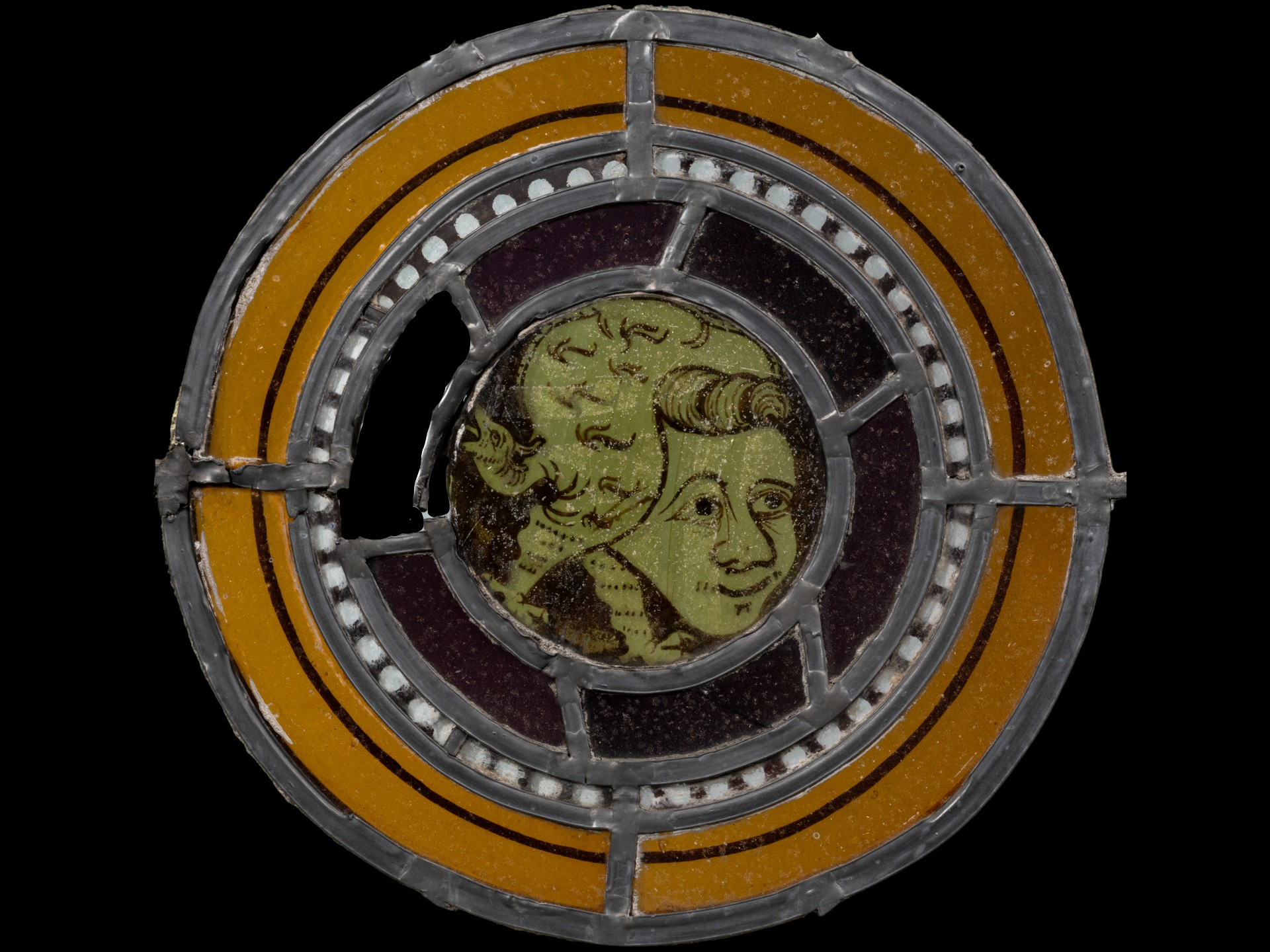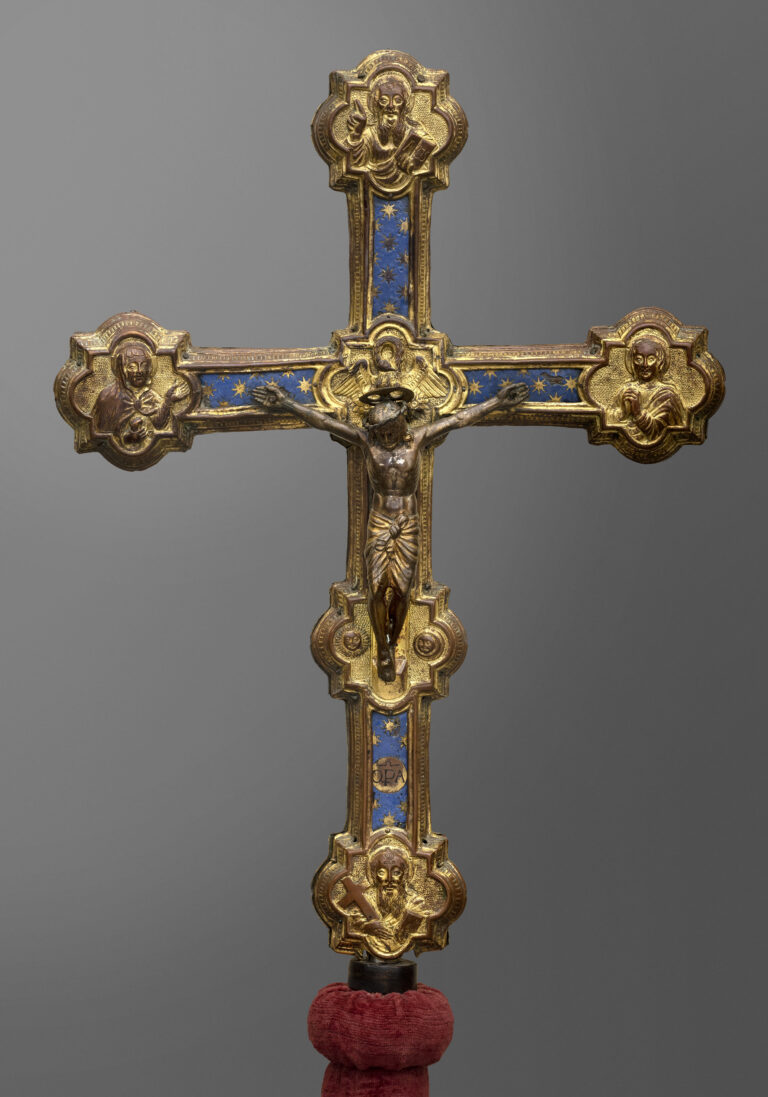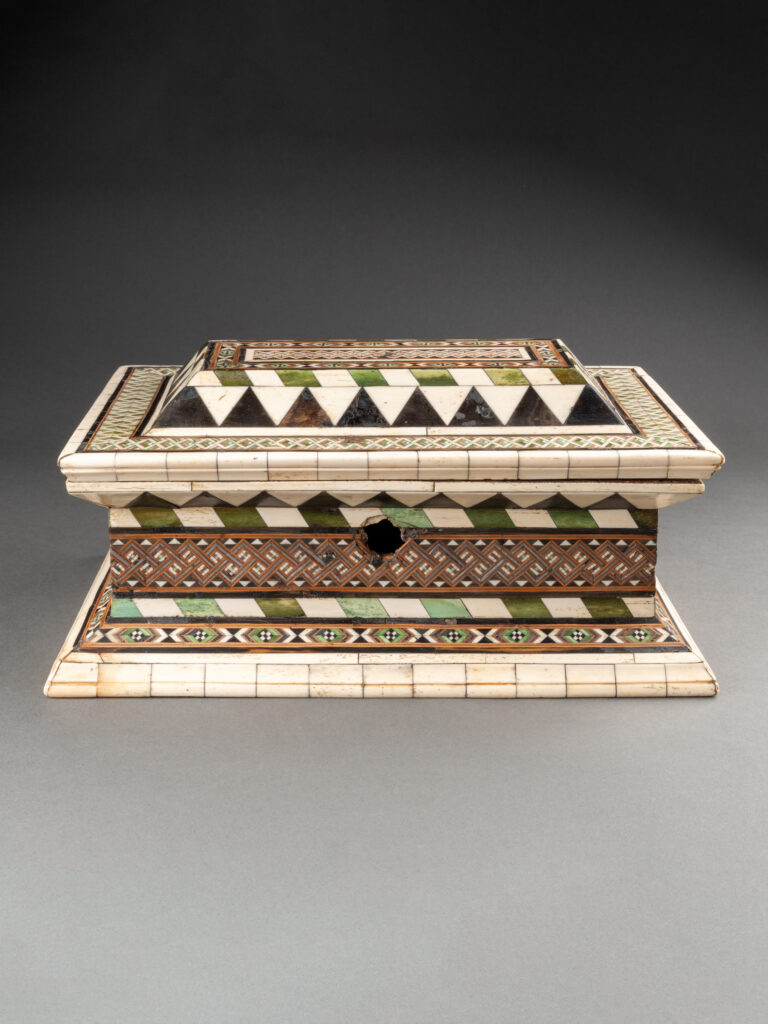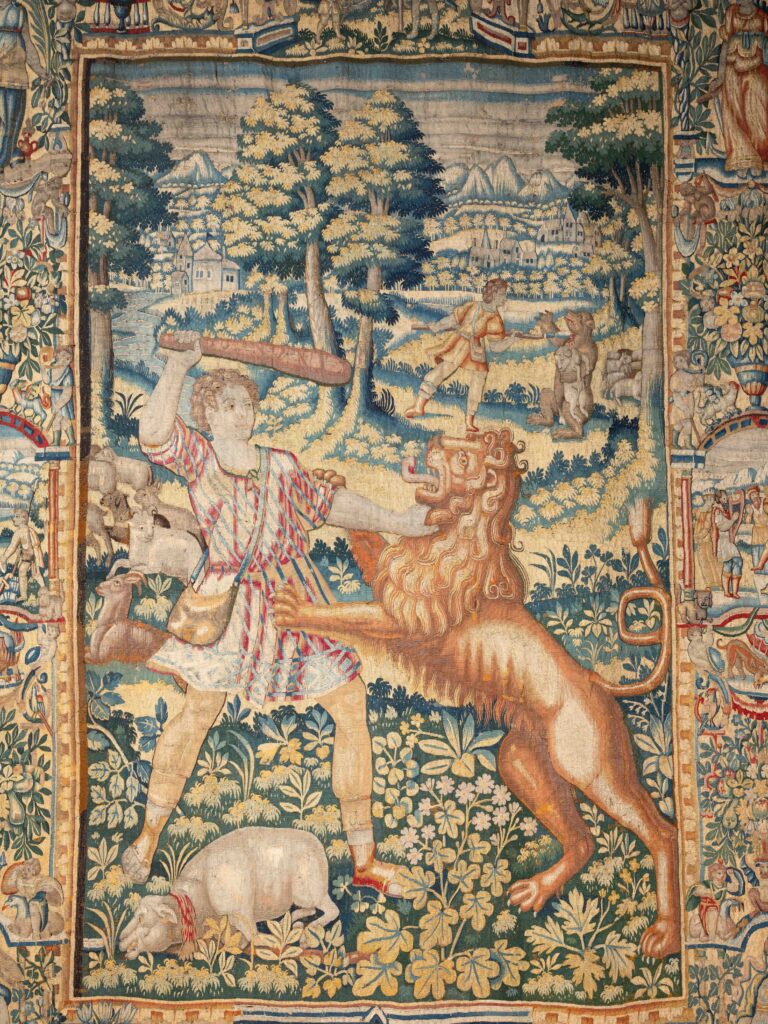Depicted in the form of a head perched on a pair of legs, devoid of an upper body with a dragon-shaped tail, this medieval stained glass is extremely rare representation of a gryllos.
The term “grylle,” of Greek origin, is the French rendition of the Latin term “gryllos” (accusative plural), which, in turn, is derived from the Greek word γρύλλοι (transcribed as “grỳlloi”). It denotes highly distorted humanoid characters and has its roots in a text by Pliny the Elder, which discusses a caricature of Gryllos (a piglet) created by a contemporary of Apelles, Antiphilus the Egyptian. Initially, the term was used to name a satiric genre of painting featuring strong deformations.
However, it later came to exclusively refer to glyptics representing beings whose bodies consist of heads. Notably, Don Felipe de Guevara, a collector of Bosch, used the term “grylle” in this modern sense in his Commentarios de la Pintura from 1560.
These creatures, often considered a form of grotesque, represent a unique artistic manifestation prevalent in Medieval and Early Renaissance periods. They are small, ridiculous, teratological creatures characterized by their truncated or exaggerated physiognomy. Various kinds of gryllos exist, characterized by haphazard assemblies and subtractions of disparate fragments of human and animal bodies, resulting in clumsy chimeras and hybrids with bizarre charm: variations of faces on legs, double-faced with a bird neck on a quadruped body, fused, stacked, and nested heads whose prototypes originate from Greco-Roman glyptic art.
The Gryllos served as a visual metaphor or allegory for various moral, theological, or philosophical ideas but they were also “drôlerie” with their humorous and imaginative design.
Medieval Europe was a period of profound religious devotion, philosophical exploration, and intellectual curiosity. Art and bestiaries served as tools for conveying complex ideas and moral lessons to a largely illiterate population. As Foucault wrote: “The Gryllos no longer recalls man, by its satiric form, to his spiritual vocation forgotten in the folly of desire. It is madness become Temptation; all it embodies of the impossible, the fantastic, the inhuman, all that suggests the unnatural, the writhing of an insane presence on the earth’s surface; all this is precisely what gives the gryllos its strange power. The freedom, however frightening, of his dreams, the hallucinations of his madness, have more power of attraction for medieval man than the desirable reality of the flesh.”
Interpretations of these creatures may vary with the context, but common themes include the idea of human sins, disconnection or imbalance, the struggle between the intellectual and the instinctual, or the duality of human nature.
The taste for glyptics, which was strong from the Carolingian Renaissance onwards, was constantly fueled, particularly by the pillaging of Constantinople in 1204, which brought cameos, intaglios, and gems into the treasuries of cathedrals and princely collections. This explains the emergence of a multitude of complex figures in paintings, manuscript margins, and architecture—figures like clusters of heads, multi-faced men, and heads grafted onto legs, all of which are referred to as grylles, as per a text by Pliny the Elder.
In summary, the “Walking Head Monster” is a captivating example of the fantastical and symbolic imagery that permeated medieval art and bestiaries. Its peculiar form invites interpretation and reflection, offering a glimpse into the intricate tapestry of medieval thought, creativity, and spirituality.






